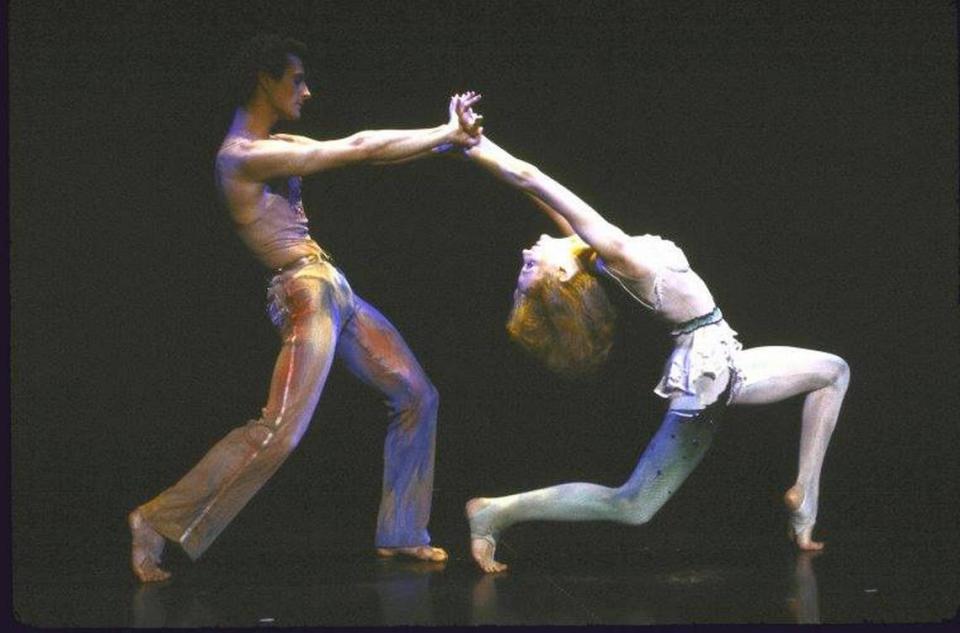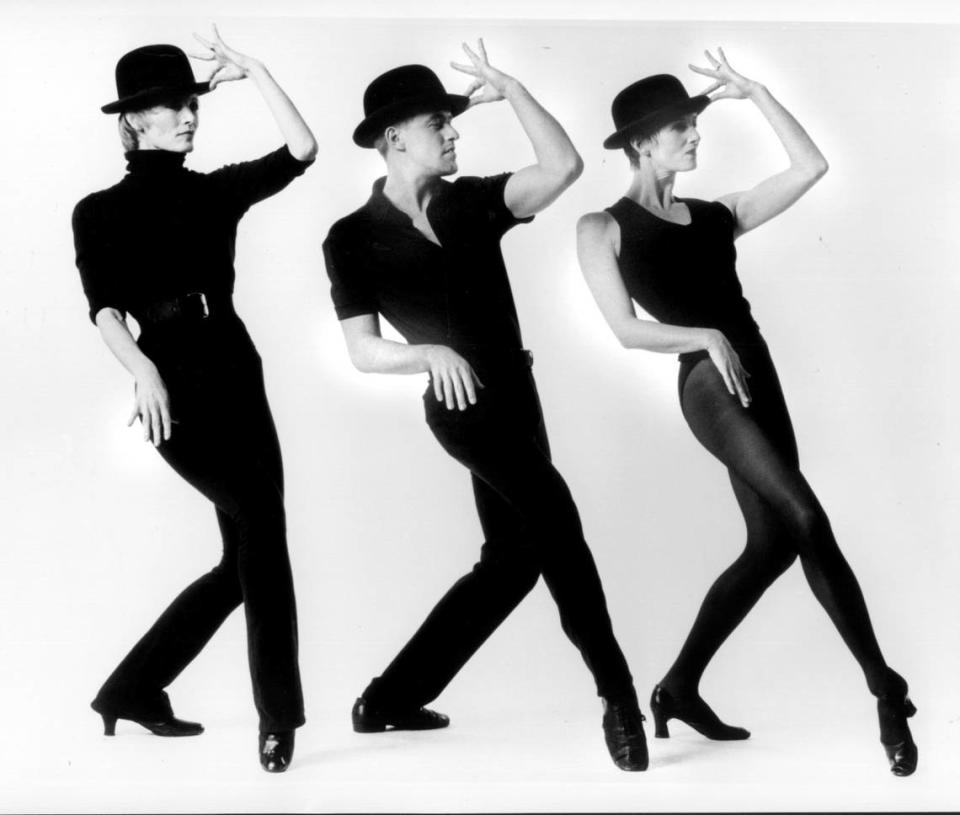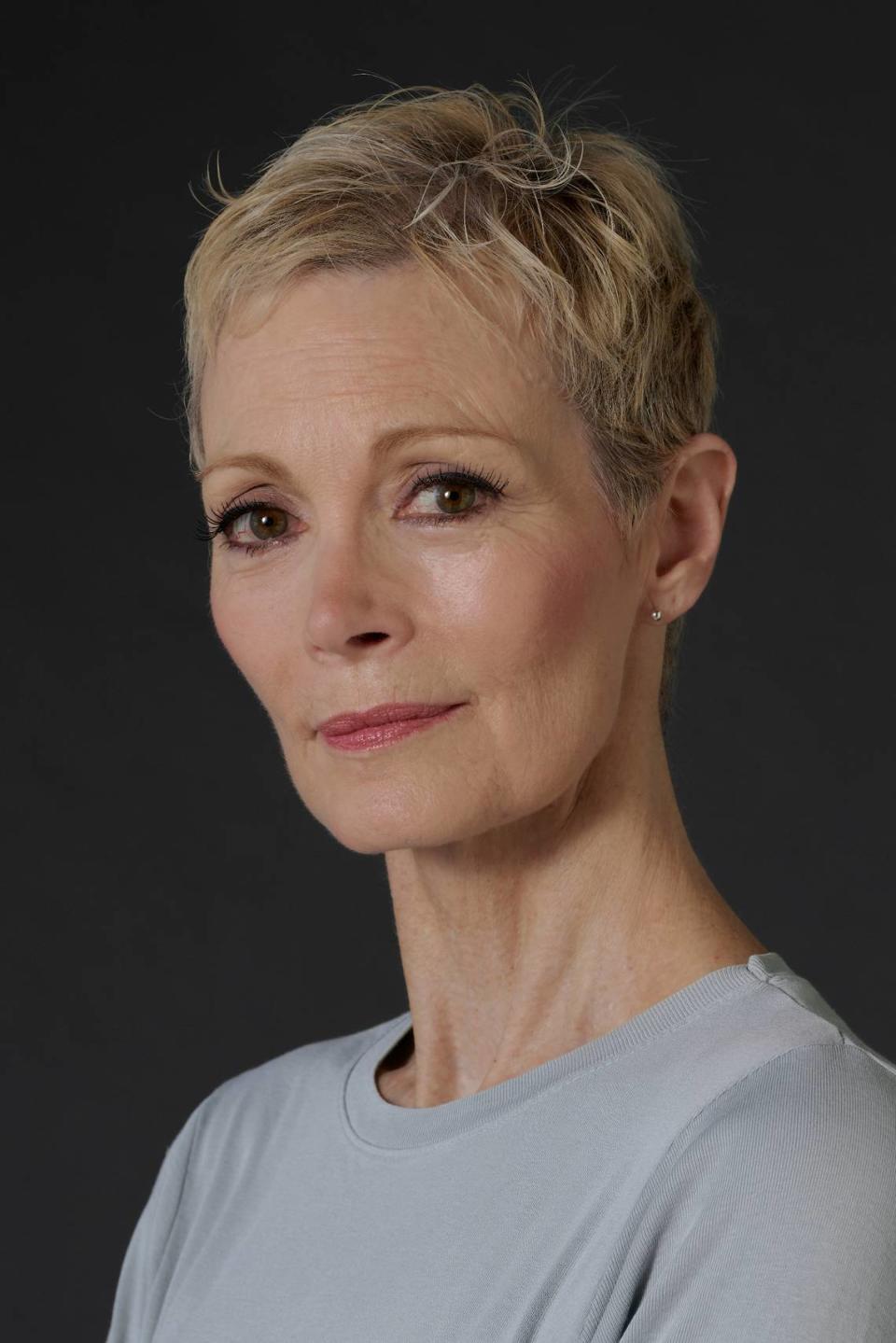Fosse discovered her 44 years ago. Now Kansas City dancer aids his return to Broadway
Early on in her career, dancer Christine Colby Jacques was told: “Don’t stop dancing. Don’t ever do that.”
She took that to heart and now, at 69, she’s still at it, sharing her love and expertise with a new generation of dancers.
In 1978, Colby Jacques was cast as a principal in Bob Fosse’s “Dancin’” on Broadway. Over 40 years later, now living in Johnson County, she’s part of the team recreating, reimagining and reclaiming that signature Fosse work for a Broadway revival in 2023.
She’s kept in shape, and with her intimate knowledge of the “Fosse style,” she has been dancing “full out” while teaching the new cast.
“As long as I can do it,” said Colby Jacques, “I’m going to do it and I wanna do it.”

From Ohio to New York City
Colby Jacques’ dance career started when she was 3. She and her mother would watch her older sister’s dance class. “I’d sneak in and I’d do it in the back,” she recalled.
She grew up in Cincinnati, where she trained in ballet, tap and jazz. She studied modern dance with James Truitte, who had danced with Alvin Ailey American Dance Theater and was a professor at the University of Cincinnati College-Conservatory of Music. She danced with the Cincinnati Civic Ballet and also joined Cincinnati’s Contemporary Dance Theater, run by Jefferson James.
Her career goal was to get to New York City and join the New York City Ballet. “I thought my parents would hand me a check after high school graduation and say ‘here you go.’”
But the path wasn’t that easy. Her father died before she graduated high school. She enrolled in college and continued to dance, eventually landing a role with the Disney on Parade tour. That job allowed her to save enough to make her own way in New York in 1974, where she worked her way into the dance industry.
She took classes with Luigi (the esteemed dancer/teacher/choreographer Eugene Louis Faccuito) and she worked. She worked as a cocktail waitress at a discotheque, she worked the front desk at Luigi’s studio, she worked as a Rockette at Radio City Music Hall, she worked in a nightclub with a trio act.
She worked.
“I would do four shows a day at Radio City and then do two shows at the nightclub,” she said. At one point, both Radio City and the nightclub were rehearsing new productions between shows.
“I would do a morning show at Radio City, rehearse, afternoon show, rehearse, late afternoon show, have dinner, do the evening show, go to the nightclub, do the late evening show, rehearse for the nightclub, do the midnight show, and then go home,” she said. “Or if it was kind of too late, we’d just stay up and have breakfast somewhere. And then the sun would come up and … we wouldn’t sleep at all.”
She was also taking classes and taking auditions. “Goodness, that was such a grind. But man, were we just living our dancer life?” said Colby Jacques.
One day, she showed up for class and barely anyone else was there. They had all gone to the audition for Bob Fosse’s new show.
Fosse was legendary on Broadway, having already won multiple awards, including an Oscar, an Emmy and a Tony just a few years before.
Fortunately, she hadn’t missed her chance.

“Dancin’” 1978
The audition process for “Dancin’” was just like it’s depicted in “A Chorus Line,” said Colby Jacques. There was a line around the block, and tryouts lasted for hours and hours. (The “Chorus Line” comparison is apt and she should know: She was in the 1985 movie, too.)
Fosse was creating a new Broadway show that was a showcase for dancers, and just about every dancer wanted to be a part of it.
Colby Jacques made it through the first seven-hour audition, then the second, then a third and final round.
Fosse himself called her to offer her a role. “I was stunned,” said Colby Jacques. It was her first show on Broadway.
“That’s how I came to know Bob Fosse and work with him and start to make his style feel like something that belonged on my body and in my dance spirit,” she said.
She would rent a studio after rehearsals to practice the style by herself. “I just put myself in front of a mirror and just put myself in the positions. To practice going from one position to another and figure out where my body needed to be to look like Ann Reinking,” she laughed, “because that’s basically who I used as my example.” Reinking was Fosse’s muse, said Colby Jacques.
The show was a musical revue, a series of dance vignettes, set to music from an array of styles, from Neil Diamond to Benny Goodman to John Philip Sousa.
“There’s no plot to follow. … He just wanted to flat out do something that showed off dancers and just express the joy of dance,” said Colby Jacques.
“Dancin’” opened in March of 1978 and went on to play on Broadway for four years, with 1,774 performances and seven Tony Award nominations, Fosse winning for choreography.
But that wasn’t her only Fosse production.
Colby Jacques was also in the revival of “Sweet Charity” as understudy for the Ursula, a glamorous and jealous girlfriend, in 1986 and performed that role in the national tour in 1987.
On opening night of “Sweet Charity” in Washington, D.C., Fosse suffered a heart attack outside his hotel. The cast was told after the curtain dropped that he had died. He was 60 years old.
Years later, Reinking and director Robert Maltby Jr. created a new show using Fosse’s choreography, a celebration of his imagination and impact on the industry. The show “Fosse” toured nationally from 1999 to 2001, with Colby Jacques in the cast.
That production came to Kansas City during the tour, performed at Starlight Theater. In a 1999 interview with The Star, Reinking said of Colby Jacques: “She knows the style beautifully. And the other dancers can see that she has a real quality. So you find the younger ones imprinting. That’s the only way to learn how to dance, by example.”
By then, Colby Jacques was in her 40s and had been dancing “Fosse-style” for over 20 years.
“I think what I learned from Fosse was the acting aspect of dance,” she said.
As the years went by, those who worked with Fosse and knew the style intimately dwindled: Gwen Verdon, his wife, died in 2000; Reinking died in 2020.

Remembering and reimagining “Dancin’”
Colby Jacques is part of a cadre of dancers determined to keep Fosse’s singular style alive and preserved, and one of the few artists left who actually worked directly with him. She’s worked with The Verdon Fosse Legacy, created by Nicole Fosse (daughter of Verdon and Fosse), to protect and promote their work.
Fosse’s iconic style is a mix of elegance and irony. It’s important to not over-dance his choreography, said Colby Jacques, but to indicate. There’s a lot happening under the surface, like a powerful engine revving.
With the idea to bring “Dancin’” back to Broadway over 40 years later, director Wayne Cilento knew he’d need experts. Cilento was nominated for a Tony with his role in the original “Dancin’” and had also originated the role of Mike in “A Chorus Line.”
He called Colby Jacques, who proved invaluable to the reconstruction process. She was in the room when much of the original work was created, cast as a swing, learning all of the women’s parts and even some of the men’s. And she had kept her notes from those days, three binders worth.
“It’s really sort of seared in my brain, but then there are other things that I haven’t thought about,” she said. “I had to go back through notes and pictures and kind of recreate that. That really consumed my every waking hour.” Some of the work came back to her through muscle memory, too, when she heard the music play.
Last year, she prepared on her own from May to mid-June, flew out to New York to workshop with a small group of dancers, then flew back again in November and December to teach all the material to the full cast.
Though there was very little video documentation, Colby Jacques studied the available film, noting differences between versions.
“It was at that moment I realized, oh my gosh, even Bob would change things, even he would change his own work,” she said. “We felt pretty comfortable not doing a rubber stamp of the 1978 show, but bringing it into the 21st century.”
They opened previews at The Old Globe in San Diego in March. The reception was so positive that they extended the run by a week.
A reviewer for the San Diego Union-Tribune wrote: “This emotive, swiftly paced production celebrates dance as Fosse did.”
“I think he’s come up with a very, very exciting show,” Colby Jacques said of Cilento.
The show is set to begin previews at Broadway’s Music Box Theatre on March 2 and open March 19, almost exactly 45 years after the original production premiered.

Busy in Kansas City
Due to her husband’s career, Colby Jacques moved to Kansas City in the early 1990s. Though she had retired from dancing, she never stopped dancing, actually. She performed as a guest artist with the Kansas City Ballet (then the State Ballet) in 1996 for Todd Bolender’s “Souvenirs.” She also did modeling, commercial work and voiceovers.
“You know, everything I did in New York, but here,” she said.
Colby Jacques also returned to her college endeavors, put aside all those years ago for the lure of Broadway. She started a degree in dance at the University of Kansas. And though she put that on pause while she was performing in that national tour of “Fosse,” she completed her degree in 2003.
She taught at the Kansas City Ballet school, conducted master classes and residencies at colleges, and led Fosse intensive workshops with fellow Fosse alum Tracy Terstriep-Herber, currently the director of theater at Pembroke HIll School.
Terstriep-Herber knew she wanted to be a dancer after seeing the touring production of “Dancin’.” She was 10 years old. And though Terstriep-Herber never worked directly with Fosse, she danced in the original Broadway production of “Fosse.”
She never worked with Colby Jacques while in New York City, said Terstriep-Herber, but once they connected in Kansas City, “it was like meeting somebody that I’d already known for 20 years, because we really have a lot of shared vocabulary, we have shared experiences.”
“She really does have a quality. … I am still taken by her, I find her stunning and I love getting in a room with her.”
Colby Jacques also works with local dance companies, and has served as rehearsal director for the Owen/Cox Dance Group for many years. Co-founder Jennifer Owen first met Colby Jacques when she led a class for the Kansas City Ballet in preparation for a new work by Reinking.
In productions for Owen/Cox, Owen said that Colby Jacques brought “a really experienced eye to the process and was really good at coaching the dancers and also helping me formulate my ideas and my approach to the choreography.”
“I really trust her opinion,” said Owen. “She just has a real generosity of spirit with her knowledge and willingness to share her experience.”
“If I’m not dancing, I don’t feel like me.”
Colby Jacques walks two to three miles a day and does Pilates. “By staying in shape, I was able to dance full out when I taught it to the dancing cast (for “Dancin’”),” she said. “I’m hoping that that was also an example for them to watch in how to execute it and how to not over-dance because now I can definitely not over-dance. So I’m hoping they take that with them as well.”
Her respect for Fosse has only grown.
“I’m that grateful and that intrigued by what (Fosse) taught me. And the more I work with his material, the more I just think about him and how he created it, the more fascinated I am, and the more I come to appreciate what he did, how he treated his actors and his dancers, and how he did everything,” said Colby Jacques. “I just appreciate him more and more as the years go on.”
Recently, she danced in a tribute during the memorial service for Billie Mahoney, a celebrated dancer and teacher who died in January. Mahoney had danced with Fosse on Broadway in the 1950s. The choreography included many of the Fosse hallmarks: the turned in toes, the slouched shoulder, the subtle restraint and even the tip of an imaginary bowler hat.
“I thought, oh my God, you still got it,” said Owen. “I couldn’t take my eyes off her, because she just has this way of moving, and even her facial expressions are just spot on.”
“It was kind of Luigi’s motto: Never stop moving,” Colby Jacques said. “If you stop moving, you will age and you will feel it. If you don’t stop moving, you’ll still age,” she laughed, “but you won’t feel it.”

 Yahoo Movies
Yahoo Movies 